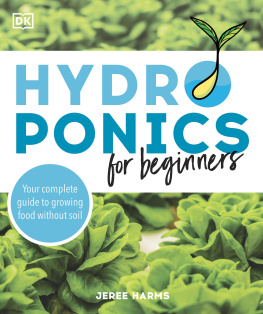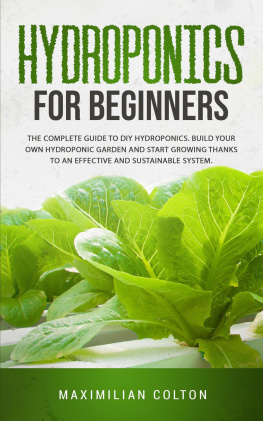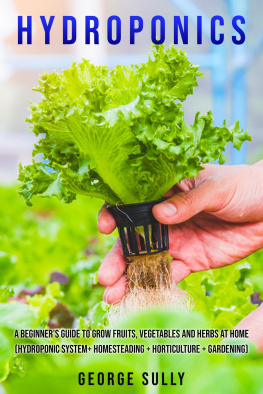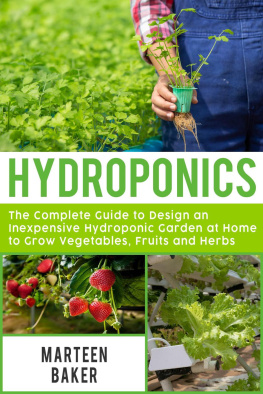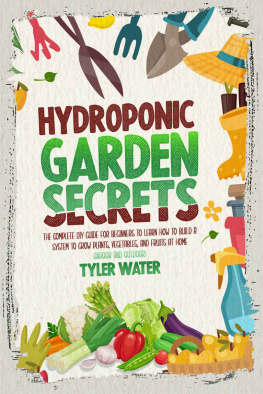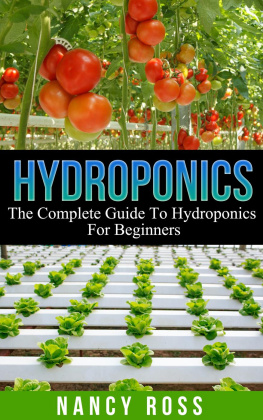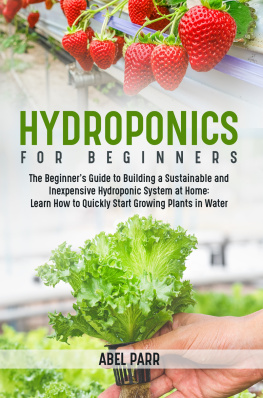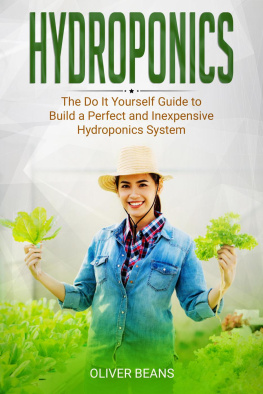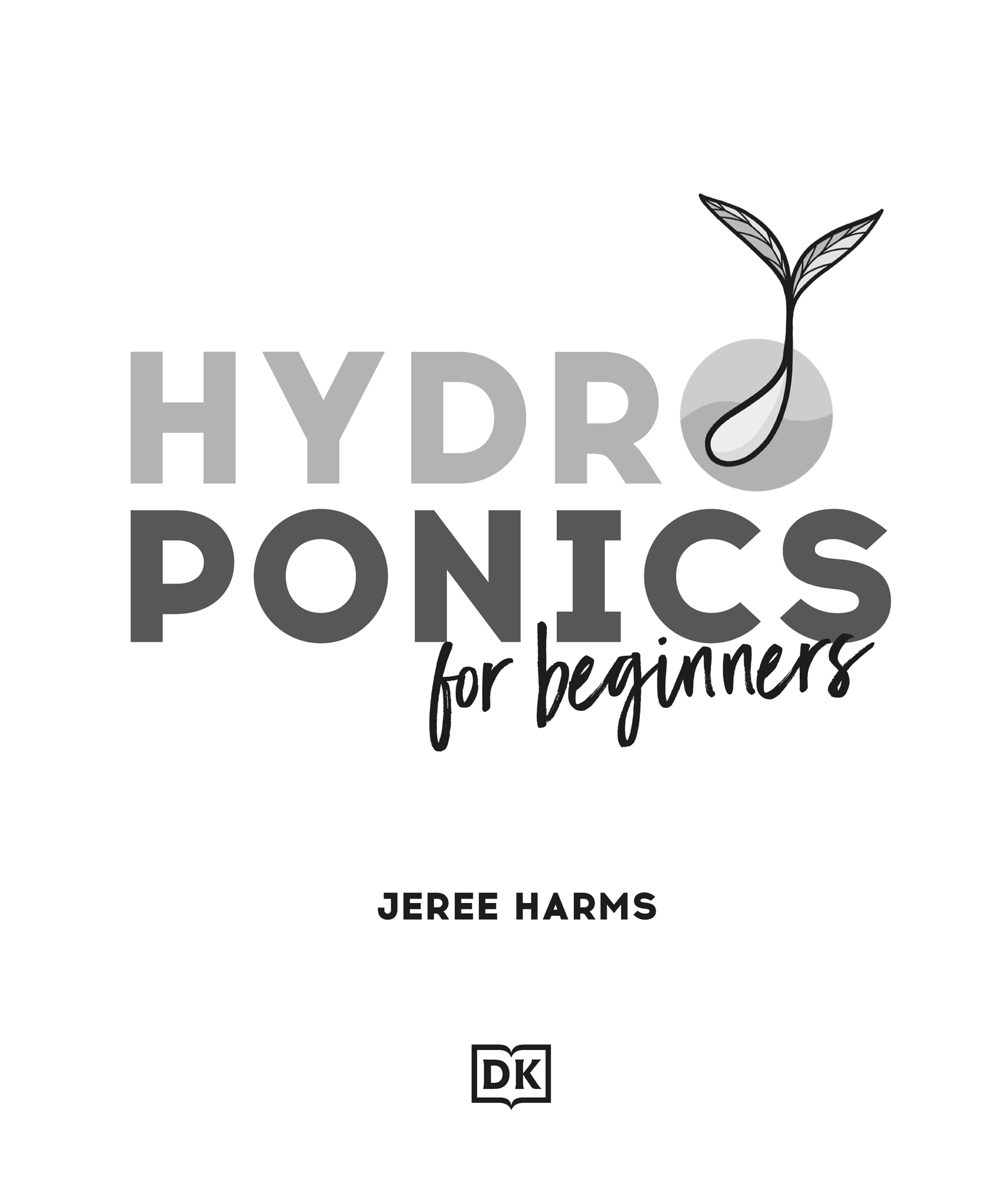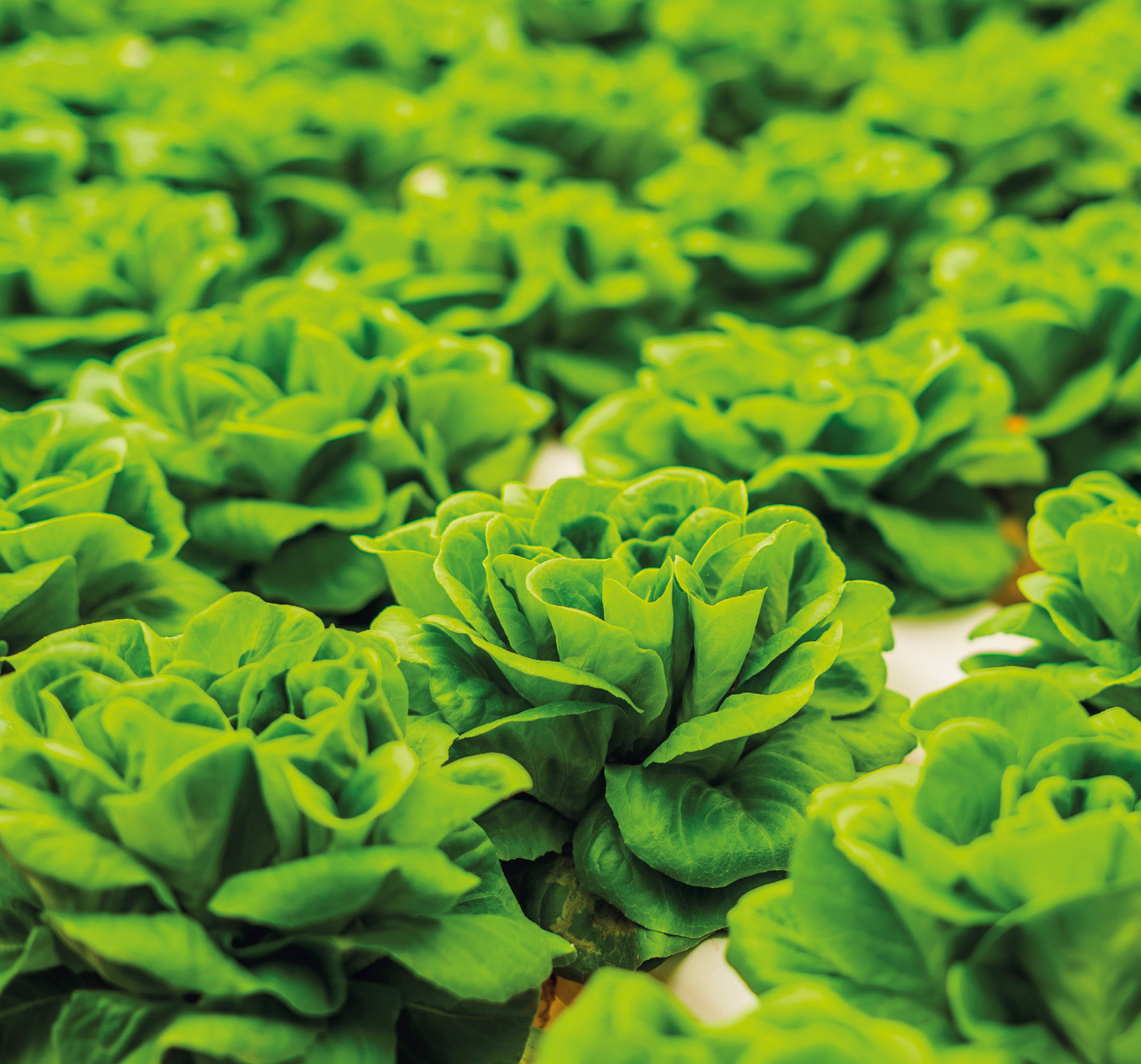Contents
CONTENTS
g
How to use this eBook
Preferred application settings
For the best reading experience, the following application settings are recommended:
- Orientation: Portrait
- Color theme: White background
- Scrolling view: [OFF]
- Text alignment: Auto-justification [OFF](if the eBook reader has this feature)
- Auto-hyphenation: [OFF](if the eBook reader has this feature)
- Font style: Publisher default setting [ON](if the eBook reader has this feature)
- In Settings, change the font size to a size you are most comfortable with.
g
INTRODUCTION
Are you ready for a new way to grow your own food?
Hi! Im Jeree Harmsthe Hydro Guy. I was introduced to hydroponics more than 30 years ago. After experimenting with this new way of growing, I was completely sold on the idea of growing plants without soil. I wrote Hydroponics for Beginners to share my excitement about growing everything from herbs and vegetables to orchids and houseplants hydroponically.
The definition of hydroponics is growing plants without soil. There are many ways to do thisand this book describes all the most popular methods. Youll see how easy it is to start a simple garden and how to plan for bigger projects as your imagination grows.
Theres a certain thrill watching the first leaves of a plant emerge from tiny seeds. And nothing matches the satisfaction of seeing those little seedlings grow into mature plants. But for many people, the anticipation of newly planted seeds turns into disappointment as they watch them spring from the container and then die or get infested with insects or diseases. I want to change that and I believe hydroponics can make the difference between success and failure.
Hydroponic growing isnt complicated and doesnt need to cost a lot of money. You dont need a garden that fills your basement or garage to experience the benefits of growing with hydroponics. A simple tray of microgreens or a small container of herbs on your countertop or windowsill can be a satisfying garden.
Step-by-step instructions show you how to hydroponically grow everything from sprouts and microgreens to peppers and tomatoes. Even if youve never gardened before, youll be growing like a pro in no time. Imagine having a garden at your fingertips that can provide healthy, homegrown produce year-round. The satisfaction of saying I grew that never loses its appeal.
My hope is that this book will encourage you to start growing with hydroponics. Whether youre a true beginner or have some experience, hydroponics will make you a better gardener.
JEREE HARMS
Venice, Florida
g
A Brief History of Hydroponics
The history of hydroponics began at least more than 2,500 years ago. From then to modern day, soilless gardening has had a long history.
600 BCE: The Hanging Gardens of Babylon
From references in ancient literature, we believe these gardens were built with an elaborate system where fresh water rich in oxygen and nutrients passed through the plants exposed roots.
11501350 CE: Chinampas
The Aztecs established the Floating Gardens of the Aztecs: islands of reed mats, called chinampas, in shallow lakes. Plants were anchored to the mats with twigs and branches.
1648: Jan Baptista van Helmonts Willow Tree Experiment
Helmont of Belgium planted a five-pound willow tree in a bucket. For five years, he added only rainwater to the bucket. He concluded that the 169-pound trees roots were nourished by water, not soil.
1860s: Sachs and Knop: Fathers of Hydroponics
German agricultural chemists Ferdinand Gustav Julius von Sachs and Johann August Ludwig Wilhelm Knop created nutrient-solution formulas for waterculture and conducted several experiments, developing the foundational elements for modern hydroponics. They called it nutriculture.
1940: The Complete Guide to Soilless Gardening published
William Gericke, of the University of California, wrote this landmark book, establishing the modern practice of hydroponics. Gericke conducted experiments throughout the 1930s in plant nutrition at large-scale commercial productions using just water and nutrients to grow tomato vines, with some growing 25 feet (7.62 meters) tall!
Hydroponics during wwII
Troops on Pacific Ocean islands used hydroponics to grow food. Most islands were either barren or made of coral, so growing food was impossible. Shipping food to troops also wasnt practical. They distilled fresh water from seawater and flushed it through the plant roots. They could grow 30 pounds of tomatoes, 20 pounds of string beans, 40 pounds of corn, and 20 heads of lettuce weekly. Troops at Ascension Island reported one monthly harvest of 1,910 pounds of cucumbers, 768 pounds of tomatoes, 990 pounds of lettuce, 109 pounds of peppers, and 955 pounds of radishes.
1940s1960s: Plastics, growing mediums, and new technologies
1948: The invention of polyethylene (a plastic). Hydroponic systems for food production could now be made from plastics or PVC.
1950s: A clay substrate called LECA (lightweight expanded clay aggregate) began to be used for growing plants because the pebbles are porous and have a wicking ability.
1965: Nutrient film technique (NFT) and drip irrigation become popular.
1976: General Hydroponics sells first commercial systems
The company was one of the first to make hydroponic systems out of PVC and other plastic materials. This would be the start of hydroponics for food production on a commercial level.
1982: Disneys EPCOT opens
Disneys EPCOT Center opened its pavilionThe Landwith a focus on the future of farming and food. Several greenhouses use the latest in hydroponic technology and visitors could tour the exhibit by boat. It was considered the first large-scale introduction of hydroponics to the general public.
Hydroponics in the 21st Century
Commercial growers use automation for growing and harvesting plants. They use digital sensors for watering. Robots assist during harvestingeven judging the ripeness of a strawberry before picking it. Our current system for producing food is being reinvented. Consumers want to understand how and where their food is grown. The traditional concept of growing food on rural farms and shipping it across the country is gradually becoming outdated.
Using hydroponic technology, indoor vertical farms in urban areas are gaining popularity. Growing food where its consumed makes more sense than shipping it thousands of miles across the country to consumers.
Such terms as waterculture, nutriponics, container agriculture, and hydroponics mean essentially the same thing. These terms are often used interchangeably.
g
The Future of Hydroponics
Hydroponics might become the future of gardening, but what might the future of hydroponics look like? Here are some present-day methods that might help foretell how hydroponics will evolve.
Why Hydroponics will Survive

